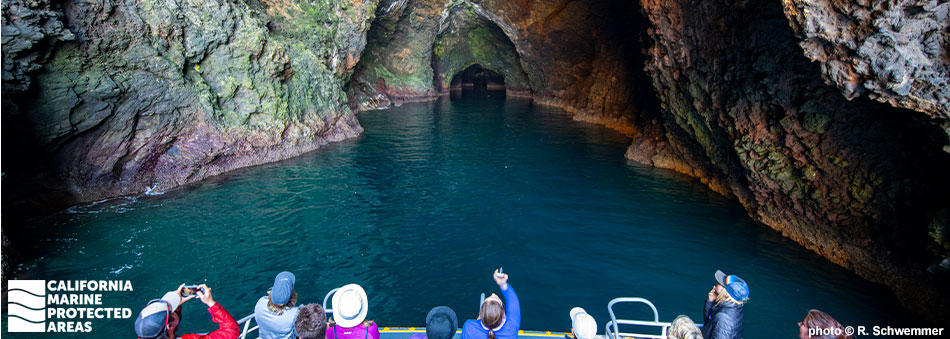
Overview
Painted Cave State Marine Conservation Area (SMCA) sits near the northwest end of Santa Cruz Island, the largest of California’s Channel Islands, south of Santa Barbara on the mainland. Protecting nearly two square miles of nearshore ecosystems, this marine protected area (MPA) is home to rocky shores, sandy seafloor habitat, and offshore rocky reefs.
The most notable feature along the predominantly rocky shoreline is Painted Cave, the largest sea cave in North America. Exploring the spectacular cave in a boat or kayak is a truly memorable experience. The SMCA's rocky shoreline provides habitat for shore and seabirds, such as brown pelicans and pelagic cormorants. Invertebrates like mussels, anemones, and barnacles can be spotted in the rocky intertidal area.
Fed by cold, nutrient-rich, upwelled waters from the California Current, the MPA protects a highly productive environment that attracts both cold- and warm-water species. Highly migratory pelagic fish like tuna and mackerel, pinnipeds like sea lions and seals, fish such as kelp bass, giant sea bass, and California sheephead, and the iconic Southern California invertebrate, California spiny lobster, can all be found in the SMCA. Although not out of reach, visiting this MPA requires a one-hour boat ride from Ventura Harbor.
Regulations
It is unlawful to injure, damage, take, or possess any living, geological, or cultural marine resource, EXCEPT:
Recreational take of lobster and pelagic finfish (northern anchovy, barracudas, billfishes, dorado (dolphinfish), Pacific herring, jack mackerel, Pacific mackerel, salmon, Pacific sardine, blue shark, salmon shark, shortfin mako shark, thresher shark, swordfish, tunas, Pacific bonito, and yellowtail) is allowed.
California Code of Regulations Title 14, Section 632(b)(108)(opens in new tab)
Quick Facts
MPA size: 1.78 square miles
Shoreline span: 2.2 miles
Depth range: 0 to 291 feet
Habitat composition*:
- Rock: 0.04 square miles
- Sand/mud: 0.17 square miles
*Habitat calculations are based on three-dimensional area and may exceed the total MPA area listed above.